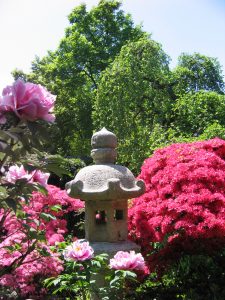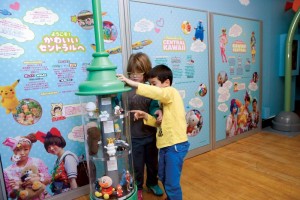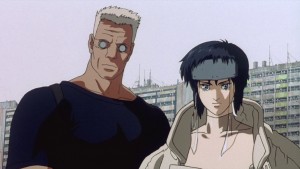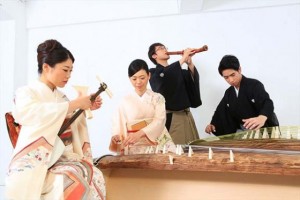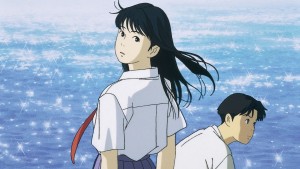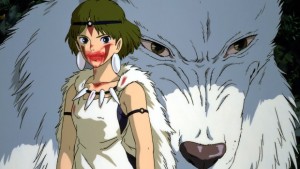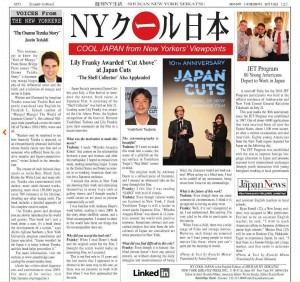JQ Magazine: Nippon in New York — Bob James, Liberty City Anime Con, PLAY NYC
By JQ magazine editor Justin Tedaldi (CIR Kobe–shi, 2001-02). Justin has written about Japanese arts and entertainment for JETAA since 2005. For more of his articles, click here.
In the dog days of summer, it’s best to escape the heat in a place that’s cozy and cool. For those into Japan-related cultural events, this month offers a diverse selection of film premieres and live music—all in the comfort of indoor air conditioning.
This month’s highlights include:
Aug. 15-20, 8:00 p.m. and 10:30 p.m.
Bob James feat. special guests
Blue Note Jazz Club, 131 West Third Street
$20, $35
The career of multi-Grammy winner Bob James is long, varied and continues to evolve at every turn as he continues to captivate audiences throughout the world for more than 50 years, 58 albums, and innumerable awards. While James is recognized as one of the progenitors of smooth jazz, his music has also had a profound effect on the history of hip-hop, having been sampled frequently since the early days of the genre. A longtime star in Japan, he has recorded a piano duet album with Keiko Matsui, and worked with Seiko Matsuda as a guest vocalist on “Put Our Hearts Together,” written by James and his daughter Hilary in response to the Great East Japan Earthquake of 2011. Joining Bob and his special guests for the week’s sets are trumpeter Randy Brecker on Aug. 16.
Aug. 18-20, various times
New York Marriott Marquis, 1535 Broadway
$40-$60
The best three-day anime convention in New York City returns for its third year and features over 100 events and panels, three days of cosplay, game tournaments and anime screenings, concerts, balls and dances. This year’s special guests include Tyler Walker, Heather Walker, Chuck Huber, Aaron Roberts, Brittany Lauda, Matt Shipman, Ian Rubin, Dokudel, Michael A. Zekas, Marcus Stimac, and Reni Mimura!
Aug. 19-20, starts 10:00 a.m.
Terminal 5, 610 West 56th Street
$25
PLAY NYC is New York’s first and only dedicated games convention. The weekend will feature three floors of playable games for all consoles, PC, virtual reality and mobile devices from studios large and small and developers old and new. Games will include indie projects with some larger triple A titles. Get access to some of the biggest games coming later this year and discover many you’ve never even heard of. PLAY NYC celebrates every facet of gaming in a way that only the Big Apple can by uniting players, developers and industry pros at a games event like no other. Special guest speakers include multi-instrumentalist Zac Zinger of Japanese traditional/jazz fusion project KAI. Read More
JQ Magazine: Manga Review — ‘Kitaro and the Great Tanuki War’

“The Great Tanuki War stands apart from the other Kitaro volumes because in this adventure, the stakes are higher than anything you’ve ever seen.” (Drawn and Quarterly)
By Julio Perez Jr. (Kyoto-shi, 2011-13) for JQ magazine. A bibliophile, writer, translator, and graduate from Columbia University, Julio currently keeps the lights on by working at JTB USA while writing freelance in New York. Follow his enthusiasm for Japan, literature, and comic books on his blog and Twitter @brittlejules.
A haunted house built on an ancient burial ground? That’s minor league. How about an entire nation built above an army of human-hating yokai who command a catfish large enough to cause earthquakes?
Shigeru Mizuki’s Kitaro and The Great Tanuki War is a manga volume that tells an epic tale pitting the titular character, Kitaro, against an army of tanuki and their powerful yokai allies. There are also a few bonus stories with Kitaro’s usual one-shot adventures. You may already be familiar with Mizuki’s famous character, but if you are not, you can brush up on his origin story featured in the first volume, The Birth of Kitaro, which JQ reviewed last year here.
This marks the third volume in the English collection of Kitaro stories published by the fine folks at Drawn and Quarterly. One of our very own JET alums, Zack Davisson (Nara-ken, 2001-04; Osaka-shi, 2004-06), has been doing his part to put Shigeru Mizuki’s timeless work on the map in the English-speaking world. He has served as translator for these Kitaro stories and also for Mizuki’s colossal four-volume manga history of the Showa period. Zack is a yokai expert in his own right and you can find out more about his career and JET experience in our vintage JQ interview with him.
As many consumers of Japanese media may already be aware, yokai are strange creatures or phenomena that originate in Japan and have become widely popular globally. Kitaro is a unique yokai who solves mysteries and fights for humans. The conflict between humans and yokai is often an issue of tension for him as he straddles both sides, but this conflict takes center stage in The Great Tanuki War, when an army of tanuki escape from their underground dwelling beneath the island of Shikoku (shout-out to our Shikoku JET alums!), to wage a war on the human residents of Japan.
JQ Magazine: Philadelphia LOVEs Japan
By Therese Stephen (Iwate-ken, 1996-99) for JQ magazine.
What many people don’t know is that the City of Brotherly Love is in love with Japan, and has been since the 1876 Centennial Exhibition in Philadelphia, when the Japanese Pavilion became one of the most popular exhibits of that historic World’s Fair.
When you think of Philadelphia, you probably think of cheesesteaks, the Liberty Bell, Independence Hall or the Rocky steps at the Philadelphia Museum of Art. What you might not realize is that Philly has many ways for Japanese, and the Japanese-at-heart, to get their Japan fix for a lot less than a roundtrip ticket to Tokyo. So, whether you’re planning a quick weekend getaway or day trip this summer, or if you’re a returning Philly JET looking at your hometown with a new post-JET perspective, read on for Philly’s best Japan picks.
Let’s start with those famous Rocky steps. It’s cheesy and we know it, but everyone who visits Philly has to replay that famous Rocky Balboa moment. So once you’ve run to the top of the steps and done your obligatory fists-in-the-air-pose, head on into the Philadelphia Museum of Art (PMA) and find your way to the East Asian Galleries.
One of the most endearing and exciting things about the PMA are its period rooms. While there are plenty of rooms displaying objects on pedestals or paintings on walls, a few steps through a doorway connecting two galleries will suddenly put you in the middle of an Indian temple or the hall of a Chinese palace. Wander a little further and you’ll find Sunkaraku Tea House, the highlight of the Japanese collection in the East Asian Galleries.
WIT Life #310: The Beauty of Washi
WIT Life is a periodic series written by professional Writer/Interpreter/Translator Stacy Smith (Kumamoto-ken CIR, 2000-03). She starts her day by watching Fujisankei’s newscast in Japanese, and here she shares some of the interesting tidbits and trends along with her own observations.
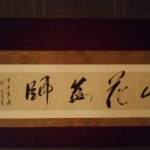
One of Suzuki Sensei’s amazing works: 以花為師 (“Life lessons from flowers”). It reads from right to left, but is slightly cut off at start.
This weekend I had a chance to sit in on a culture class at the Nippon Club for the purpose of writing an article in Chopsticks. We were studying calligraphy, but specifically practicing this art on 和紙 (washi or Japanese paper). Sensei Mori Suzuki was visiting from Japan just for this class, and in addition to guest teaching we got to enjoy an exhibition of his work and other washi delights in the 7th floor gallery. Entitled 「和紙・伝統と創造」 (Washi: Dentou and Souzou or “Washi Paper: Cultural Heritage and Artistic Creativity”), this exhibit introduces the history of traditional handmade washi, the aesthetic beauty of 切金(kirikane or metallic foil cut into strips or other shapes to form decorative motifs) through the subtle light reflected from foil, origami artwork, modern washi sculptures, and Suzuki Sensei’s calligraphy creations on handmade washi. It runs through February 24 with free admission, and the gallery is open every day but Sunday so make sure to check it out before it closes !
!
JQ Magazine: Nippon in New York — ‘Your Name’ Premiere, Hougaku Quartet, ‘Girl X’
By JQ magazine editor Justin Tedaldi (CIR Kobe-shi, 2001-02). Justin has written about Japanese arts and entertainment for JETAA since 2005. For more of his articles, click here.
Stay warm this winter with some hot local events, from an exhibition that will transport you to another time and place, some new an classic anime screenings, and a mash-up multimedia performance you won’t want to miss.
This month’s highlights include:
Now through May 14
Children’s Museum of Manhattan, 212 West 83rd Street
$12 children and adults, $8 seniors
Back for the new year, this exhibit highlights how old and new traditions coexist in Japan, giving visitors a family-friendly window into Japanese culture. Children will have fun learning about life in present day Japan in this playful, immersive environment. Hello from Japan! is a new interactive exhibit in the Museum’s Lower Level Gallery. It will transport families to two distinct areas of Tokyo that exist side by side: the serene and exquisite Shinto Shrine Park, and the too-cute-for-words Kawaii Central.
Feb 7-8
City Cinemas Village East Cinema, 181-189 Second Avenue
$15
Before the release of next month’s live-action adaptation starring Scarlett Johansson and Takeshi Kitano, catch one of the greatest anime films of all time (based on the manga by Masamune Shirow and directed by Mamoru Oshii) on the big screen! In the near future, an elite group of police cyborgs called Section 9 works to stop hackers from commiting cyber crimes across the globe. However, there skills are put to the test when they come up against a hacker known as the Puppet Master. The pair of Feb. 7 screenings will be in Japanese with English subtitles; Feb. 8’s screening is English dubbed.
Thursday, Feb. 16, 8:00 p.m.
Asia Society, 725 Park Avenue
Free, tickets available here.
Re-envisioning Japanese traditional instruments for contemporary music, the Hougaku Quartet explores everything from traditional Japanese music to cutting edge new compositions, all performed on traditional instruments. The quartet is made up of a group of young virtuoso musicians who graduated from Tokyo University, who have mastered the art of creating music for today and for the future, through traditional Japanese instruments. The Hougaku Quartet carries out its mission through commission, revival performance of masterpieces composed after the 1960s, and performance in the traditional “Sankyoku” ensemble style. A group of young musicians who are committed to both sustaining and expanding tradition, Hougaku Quartet is a fresh approach to Japanese music. With a special guest performance by Ralph Samuelson.
JQ Magazine: Nippon in New York — Anime films, Final Fantasy Live, Yoshiki at Carnegie Hall
By JQ magazine editor Justin Tedaldi (CIR Kobe-shi, 2001-02). Justin has written about Japanese arts and entertainment for JETAA since 2005. For more of his articles, click here.
Start 2017 off right by heading down to your local concert hall, cinema, or arts center for some fantastic new year’s fare. Whether you enjoy movies, travel, or orchestral performances classic video games, treat yourself and catch a break from the cold.
This month’s highlights include:
Now playing through Jan. 5
IFC Center, 323 Sixth Avenue
$15
New 4K restoration! Rarely seen outside of Japan, Ocean Waves is a subtle, poignant and wonderfully detailed story of adolescence and teenage isolation. Taku and his best friend Yutaka are headed back to school for what looks like another uneventful year. But they soon find their friendship tested by the arrival of Rikako, a beautiful new transfer student from Tokyo whose attitude vacillates wildly from flirty and flippant to melancholic. When Taku joins Rikako on a trip to Tokyo, the school erupts with rumors, and the three friends are forced to come to terms with their changing relationships. As the first Studio Ghibli film directed by someone other than studio founders Hayao Miyazaki and Isao Takahata, these new screenings of Ocean Waves are paired with Ghiblies: Episode 2, a unique 25-minute short film from Studio Ghibli, featuring several comedic vignettes of studio staff as they go about their day. Utilizing new animation techniques and software that would then be deployed on the production of My Neighbors the Yamadas, Ghiblies: Episode 2 made its North American debut in December 2016. Presented in Japanese with English subtitles.
January 5 & 9, 7:00 p.m.
Princess Mononoke: 20th Anniversary
AMC Empire 25, 234 West 42nd Street
$15.99
A two-night event! Princess Mononoke, the classic animated film from groundbreaking writer/director Hayao Miyazaki and the legendary Studio Ghibli, returns to movie theaters in celebration of the beloved historical fantasy’s 20th anniversary and director Miyazaki’s birthday. The first Studio Ghibli film to receive an uncut U.S. theatrical release, Princess Mononoke returns to cinemas subtitled on Jan. 5 at 7:00 p.m. and English-dubbed on Jan. 9 at 7:00 p.m. The celebration will include a special bonus screening of the music video directed by Hayao Miyazaki, Chage and Aska’s “On Your Mark”!
Jan. 5-9
The Public: Martinson Hall, 425 Lafayette Street
$25, $20 members
Part of the 2017 Under the Radar Festival! Tokyo, 1937: An American silent film about a Japanese immigrant is introduced by a celebrated narrator whose existence is being threatened by the impending arrival of the talkies. Ten years later, he will survive under U.S. occupation as a street performer, desperately attempting to finish this story. Admiration and resistance, dreams and survival, Club Diamond is a modern take on the immigration tale. Its creators are Nikki Appino, an award-winning filmmaker, Saori Tsukada, who has been described as a “charismatic mover” (Backstage) and a “startlingly precise dancer” (The New York Times), and has been developed in collaboration with violinist Tim Fain.
JQ Magazine: Book Review — The ‘Tonoharu’ Trilogy
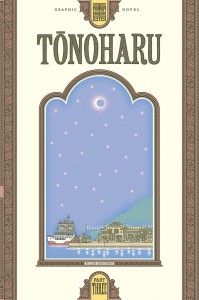
“This graphic novel series arrests your attention, from the immersive quality of the art, to the highs of self depreciating humor, to the lows of isolation and despair that run through it. Those who have lived abroad will find much to relate to.” (Top Shelf Productions)
By Julio Perez Jr. (Kyoto-shi, 2011-13) for JQ magazine. A bibliophile, writer, translator, and graduate from Columbia University, Julio currently keeps the lights on by working at JTB USA while writing freelance in New York. Follow his enthusiasm for Japan, literature, and comic books on his blog and Twitter @brittlejules.
Everyone has felt out of place at some point in their lives. People who choose to live abroad sometimes make that their everyday. In Tonoharu, cartoonist and JET alum Lars Martinson (Fukuoka-ken, 2003-2006; Kyoto-fu, 2011-2016) illustrates a story exploring themes of human relationships through the experience of an English teacher in Japan on a journey of self-discovery. Told in three parts, the final volume was released in November and represents many years of work for Martinson that began to see fruition when he received the Xeric Grant for Comic Book Self-Publishers in 2007.
Tonoharu is a tale of several non-Japanese teachers of English living in the titular rural town outside of Fukuoka City, mostly from the viewpoint of a young American named Dan Wells. Wells feels out of place in Japan, but claims to have felt the same way back home without having the excuse of being a foreigner. The reader climbs in the back seat for an intimate road trip with him through his pursuit of purpose and success in his job and social life, privy to all manner of encounters from intimacy in the bedroom to traditional parades with locally made floats. In just one year, Wells encounters unique challenges in his work, frustrations with seemingly unrequited romantic interest for another American, confusion and alarm at the mysterious activities of other foreigners in Tonoharu, and worst of all, the inability to replace light bulbs in his apartment!
Tonoharu is full of quiet moments that when described may come off as unimpressive, but they are always captivating and powerful in the way the words and imagery captures the moodiness of imperfect exchanges between people that are not usually seen in glossier fiction. This quality is enhanced by a lack of narration—the framing story of Dan’s successor (also named Dan) features his narration, but in the main story the characters only express themselves by speaking to one another. Often the things they don’t say, their expressions and their body language, and the things they choose to say while alone, speak just as powerfully as the introspective autobiographical style of narrative-driven graphic novels such as Persepolis.
JQ Magazine: Manga Review — ‘Kitaro Meets Nurarihyon’
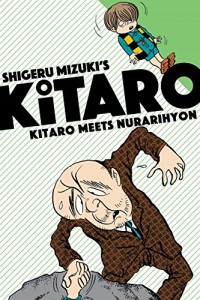
“If you are a lover of the weird or irreverent comedy mixed with supernatural horror, manga, and Japanese folklore-inspired fiction, then find the spiritual world portal of your choice to get your hands on a copy of Kitaro Meets Nurarihyon.” (Drawn and Quarterly)
By Julio Perez Jr. (Kyoto-shi, 2011-13) for JQ magazine. A bibliophile, writer, translator, and graduate from Columbia University, Julio currently keeps the lights on by working at JTB USA while writing freelance in New York. Follow his enthusiasm for Japan, literature, and comic books on his blog and Twitter @brittlejules.
Imagine coming home to find a stranger in your house. He acts like he owns the place, eats your food and drinks your beer, before leaving you reeling in confusion! Better send a letter to the Yokai Post for help from Kitaro, a charming character made by manga legend Shigeru Mizuki. Kitaro investigates strange phenomena and protects humans from ill-intentioned yokai.
Shigeru Mizuki’s Kitaro – Kitaro Meets Nurarihyon is a manga volume collecting seven more of Kitaro’s paranormal adventures. While this book can be enjoyed as a stand-alone dive into the classic character’s adventures, your enjoyment can be enhanced by checking out Kitaro’s origin story featured in the first volume, The Birth of Kitaro, reviewed last year by JQ here. This book is one of several entries in a list of literary delights from Japan that Drawn and Quarterly has been bringing to America for affordable access. This volume was also translated by JET Alum and Shigeru Mizuki expert/JQ interviewee Zack Davisson (Nara-ken, 2001-04; Osaka-shi, 2004-06).
Like it says on the tin, in this book Kitaro encounters a uniquely urban yokai: Nurarihyon. This creature takes on the appearance of an unsettling-looking and self-important man to stealthily wreak havoc as mundane as forcing you to serve him your best snacks and as extreme as explosions in cities.
Many of the yokai Kitaro encounters cause trouble because it is in their nature, some have a need to feed, or have a human-like impulse that persists beyond the grave, but Nurarihyon is cut from a different cloth. He is simply cruel and makes mischief because of his hatred for humans. He also stands apart from others in Kitaro’s rogues gallery because he finds it repulsive that Kitaro helps humans and targets him for that reason. You’ll have to pick up the book to find out just how Nurarihyon plots Kitaro’s demise, and how he very nearly gets away with it!
JQ Magazine: Book Review — ‘I Want That Love’
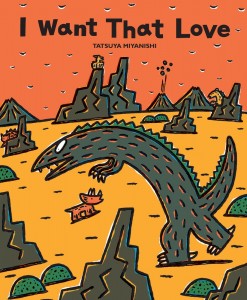
“I Want That Love is a very enjoyable read that teaches the importance of friendship, love and tenderness. Young readers will also learn how life’s most important lessons can be passed down from generation to generation.” (Museyon)
By Rashaad Jorden (Yamagata-ken, 2008-10) for JQ magazine. A former head of the JETAA Philadelphia Sub-Chapter, Rashaad is a graduate of Leeds Beckett University with a master’s degree in responsible tourism management. For more on his life abroad and enthusiasm for taiko drumming, visit his blog at www.gettingpounded.wordpress.com.
During your elementary school days, you surely read about the primordial creatures you know as dinosaurs. But if you haven’t been reminded of the creatures that roamed the earth roughly 65 million years ago in some time, you might not realize that there’s more than meets the eye. Case in point: Tatsuya Miyanishi’s I Want That Love.
I Want That Love (the third book in Miyanishi’s Tyrannosaurus series of 13 titles that have sold more than three million copies internationally) tells the story of a Tyrannosaurus, who is described by the author as “the strongest of all the dinosaurs.” Not surprisingly, everyone is scared of him as he never fails at getting his way by force. But the good times don’t last—the Tyrannosaurus (whose name is revealed to be Mr. Rhadbodon)—is somehow sapped of his strength after being bitten in his tail by a Masiakasaurus.
As expected from someone whose identity is clearly tied to brute force, the Tyrannosaurus loses all sense of who he is, so he’s desperate to find any solution to the disaster that has befallen him. Fortunately, he receives help in the form of berries given to him by fellow creatures and he uses his newfound energy to protect his friends from other dinosaurs.
JQ Magazine: Book Review — ‘Are You an Echo?’
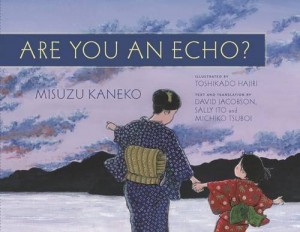
“This is an outstanding collection of poems that reflects a wide variety of emotions and observations while giving readers new and colorful images of Japan.” (Chin Music Press)
By Rashaad Jorden (Yamagata-ken, 2008-10) for JQ magazine. A former head of the JETAA Philadelphia Sub-Chapter, Rashaad is a graduate of Leeds Beckett University with a master’s degree in responsible tourism management. For more on his life abroad and enthusiasm for taiko drumming, visit his blog at www.gettingpounded.wordpress.com.
As we might take for granted the ability to research anything and everything quickly, it’s easy to forget how much of a struggle it has been (and still might be) to discover fascinating aspects of history. But when those discoveries are made, it’s satisfying not just for those who make the extensive effort—it’s rewarding for those who have benefited from the discoveries.
Thanks to fellow author Setsuo Yazaki, English-language speakers from all over the world now have the opportunity to read Are You an Echo? The Last Poetry of Misuzu Kaneko, a collection of poems produced by the late lauded children’s writer. Yazaki was a young student when he read Misuzu’s poem “Big Catch,” and he was automatically intrigued by her. So he wanted to discover more of her works and immediately started trying to find them—only to run into run one obstacle after another. Finally, Setsuo made a breakthrough when he was able to reach Misuzu’s younger brother Masasuke (then 77 years of age), who handed Yazaki a set of diaries, which included poems Misuzu wrote.
A prolific writer, Misuzu’s works regularly appeared in popular magazines. She wrote 512 poems, but only a few of them appear in Are You an Echo? Even so, that small sample size is enough to give you a glimpse into her life. Misuzu grew up in a fishing village in western Japan, and she loved being around water (she wrote one poem about an island she visualized but couldn’t reach). She also had a very vibrant imagination, and everything she encountered had feelings, like snowflakes (she’s actually concerned about their well-being) or telephone poles (which at one point, got sleepy). Even cicadas wore clothes in Misuzu’s world.
JQ Magazine: Book Review — ‘Diary of a Tokyo Teen’
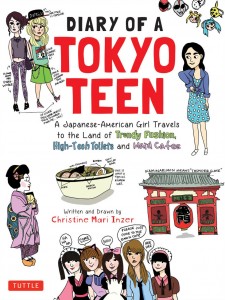
“Through reading her travelogue, Inzer comes across as a writer who would make an excellent travel blogger, as she gives prospective visitors to Japan fascinating tidbits about the country’s culture and attractions.” (Tuttle Publishing)
By Rashaad Jorden (Yamagata-ken, 2008-10) for JQ magazine. A former head of the JETAA Philadelphia Sub-Chapter, Rashaad is a graduate of Leeds Beckett University with a master’s degree in responsible tourism management. For more on his life abroad and enthusiasm for taiko drumming, visit his blog at www.gettingpounded.wordpress.com.
You may remember being treated to “What I did during my summer vacation” tales in elementary school. Well, Christine Mari Inzer spent a memorable summer vacation visiting family in Japan and she documents those travels in a largely visual journey entitled Diary of a Tokyo Teen.
Originally published independently in 2014, this updated, expanded edition is in gorgeous full color and includes over 20 new comics and photos in a large-size format (7.5” x 10”) — all at a very affordable price.
The spirited daughter of a Japanese mother and American father, Inzer describes herself as being half at home in the United States and half at home in Japan, and summarizes her travels through a collection of photos, illustrations (all self-drawn), and anecdotes. Geared toward young adults (the author is currently a student at the University of Richmond), Inzer details the ups and downs of travel while humorously detailing some moments of aggravation, such as her frustration with the shyness of Japanese boys.
JQ Magazine: Manga Review — ‘The Osamu Tezuka Story’
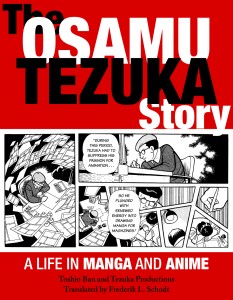
“Gargantuan in size at 928 pages (including detailed appendixes), this manga-format biography is a surprisingly quick read. Its fast-paced visuals and story provide a unique vantage to observe a legendary figure that leaves you energized after each sitting.” (Stone Bridge Press)
By Alexis Agliano Sanborn (Shimane-ken, 2009-11) for JQ magazine. Alexis is a graduate of Harvard University’s Regional Studies-East Asia (RSEA) program, and currently works as a program coordinator at the U.S.-Asia Law Institute of NYU School of Law.
For many, the newest publication from Stone Bridge Press will seem like a long lost friend. Originally serialized in 1989 and completed in 1992, The Osamu Tezuka Story: A Life in Manga and Anime, written and illustrated by Toshio Ban in association with Tezuka Productions and translated by Frederik L. Schodt, is a book worth the wait. Gargantuan in size at 928 pages (including detailed appendixes), this manga-format biography is a surprisingly quick read. Its fast-paced visuals and story provide a unique vantage to observe a legendary figure that leaves you energized after each sitting. Whether you first learned about manga and anime yesterday, five years ago, or have been a diehard fan for decades, this book has something to offer.
Manga and anime artist Osamu Tezuka carries the weight that Walt Disney carries in the West. His vision, ingenuity, and motivation defined and propelled the bourgeoning manga and anime industry of the fifties, sixties, and seventies. This book follows Tezuka through it all: from his birth in Osaka in 1928 to his death in 1989, and everything in between. Through him, we see 1930s Japan and the rise of militarism, the authoritarian interwar, the penurious postwar, and the gradual rebirth and growth leading to the booming days of the 1980s. In his lifetime, Tezuka experienced it all—feast and famine, war and peace—and it is fervently captured in his artwork and stories.
This book is written and illustrated by Toshio Ban, a longtime animator and friend of Tezuka. Carefully researched and painstakingly detailed, Ban covers everything from Tezuka’s lifelong fascination of insects, his struggle balancing his academic passion of medicine, and his artistic passion of manga and anime, to his various commutes between Takarazuka City and Tokyo. While some details are lacking (for example, the reasons behind his first animation studio Mushi Production’s bankruptcy and financial problems), Ban has created a work exhaustive as it is fascinating.
Justin’s Japan: ‘The Osamu Tezuka Story’
By JQ magazine editor Justin Tedaldi (CIR Kobe-shi, 2001-02) for Shukan NY Seikatsu. Justin has written about Japanese arts and entertainment for JETAA since 2005. For more of his articles, click here.
This summer, get to know the “God of Manga.”
From Stone Bridge Press comes “The Osamu Tezuka Story,” a documentary manga biography of the influential artist and the birth and evolution of manga and anime in Japan.
Written and illustrated by longtime Tezuka associate Toshio Ban and newly translated into English by Frederik L. Schodt (author of “Manga! Manga! The World of Japanese Comics”), this colossal 928-page trade paperback covers the entire life of Tezuka (1928-1989), warts and all.
“Readers may be surprised to see how honestly Tezuka is depicted, as an extraordinarily obsessed individual whose family rarely saw him and as someone who suffered from his creative impulse and hyper-competitiveness,” writes Schodt in the introduction.
The creator of such beloved characters as Astro Boy and Kimba the White Lion, Tezuka also experimented with darker, more adult-themed works, penning more than 150,000 pages (over 700 volumes) in his lifetime, dwarfing any other manga artist. The book includes a detailed appendix of his complete creative output.
“As Tezuka grows and develops you are slowly introduced to his world and genius. This book isn’t just a book about a man, it’s a book about the development of a nation,” says Alexis Agliano Sanborn, a New York University program coordinator and Japan specialist. “Japan wouldn’t be the Japan it is today without Tezuka, and this book helps you realize it.”
For more information, visit www.stonebridge.com/catalog/the-osamu-tezuka-story.
WIT Life #291: Waku Waku +NYC event and Sebastian Masuda

Sebastian Masuda with protege Kyary Pamyu Pamyu
WIT Life is a periodic series written by professional Writer/Interpreter/Translator Stacy Smith (Kumamoto-ken CIR, 2000-03). She starts her day by watching Fujisankei’s newscast in Japanese, and here she shares some of the interesting tidbits and trends along with her own observations.
This weekend I had the chance to visit “Waku Waku +NYC,” a new Japanese pop culture festival which took place over two days across multiple venues in Greenpoint and Williamsburg. According to the event’s homepage, it brings together the worlds of anime, manga, music, food, film, and fashion via exhibits, panels, screenings, and interactive events. This blend of pop culture from Japan and Brooklyn was envisioned as “Cool Japan meets New York’s Coolest Borough.” The name Waku Waku (わくわく) Read More
Justin’s Japan: VAMPS, ‘Monkey Business,’ AKB48 at Japan Day @ Central Park
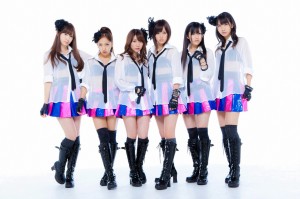
J-pop superstars AKB48 return for their first New York performance since 2009 at Japan Day @ Central Park May 10. (@AKS)
By JQ magazine editor Justin Tedaldi (CIR Kobe-shi, 2001-02) for Examiner.com. Visit his Japanese culture page here for related stories.
As spring continues and the weather continues to warm, New Yorkers can enjoy activities all over the city both indoors and out.
This month’s highlights include:
Friday, May 1, 8:00 p.m.
Best Buy Theater, 1515 Broadway
$35
Japan’s most daring rock band, VAMPS is fronted by vocalist hyde of L’arc~en~Ciel and guitarist K.A.Z of Oblivion Dust. Now touring in support of their latest album, Bloodsuckers (available on iTunes), VAMPS returns to take another bite out of the Big Apple for their first area performance since 2013.
Monday, May 4, 6:30 p.m.
Monkey Business: Japan/America Writers’ Dialogue in Words and Pictures
Asia Society, 725 Park Avenue
$15, $10 Asia Society members, $12 students/seniors
Join this annual conversation between contemporary Japanese and American authors in which Asia Society hosts an international dialogue, curated and moderated by the co-founders and editors of the Tokyo-based literary journal Monkey Business with writers who are featured in the latest edition of Monkey Business (#5), a unique, cutting-edge annual literary journal which showcases newly-translated Japanese as well as contributions from contemporary American and British writers.
Thursday, May 7, 6:30 p.m.
The Magical Art of Translation: From Haruki Murakami to Japan’s Latest Storytellers
Japan Society, 333 East 47th Street
$12, $8 Japan Society members, students/seniors
Since 1989, Jay Rubin has translated many of Haruki Murakami’s most successful and prize-winning novels, including The Wind-Up Bird Chronicle, Norwegian Wood and 1Q84. In this program, he is joined by Ted Goossen, translator of Murakami’s most recent U.S. publications, The Strange Library and Wind/Pinball: Two Early Novels, and co-editor of Monkey Business literary magazine, which showcases the best of contemporary Japanese literature for an international audience. They will discuss the unique challenges of translating modern Japanese literary works into American English, and vice versa. Rubin will also talk about his transition from translator to novelist vis-à-vis his debut novel The Sun Gods. Joining the discussion from Tokyo will be authors Aoko Matsuda and Satoshi Kitamura, and Motoyuki Shibata, friend and translating partner of Murakami. Author Roland Kelts, co-editor of Monkey Business, moderates the discussion. Followed by a reception.
For the complete story, click here.




